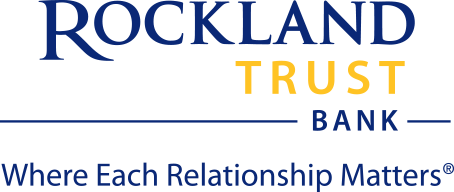Written by Steve Andrews

An Update on Interest Rates
The Fed paused their rate hikes at the June FOMC meeting. This is after 10 consecutive rate hikes which moved the Fed Funds rate from near zero in March 2022 to over 5.00% today. The sharp rise in inflation that brought consumer prices (CPI) from a decade-long run at a benign 1.5%, up to 9.1% a year ago forced the Fed to respond last June with its first 0.75% rate hike since 1994. Seven more rate hikes followed through May of this year.
Historically, once the Fed begins raising rates, they don’t stop until the economy is forced into a recession. So, it’s little wonder why the markets have bounced back from the lows of last October as investors began to see light at the end of the Fed’s long rate-hiking tunnel.
The US economy has remained resilient (defiant?) in the face of the massive rise in rates. And this is despite the headwinds these rate raises caused. Housing was already reeling from a lack of supply, price hikes, and labor and material shortages. Then higher mortgage rates jumped onto the pig pile. Manufacturing was dealing with a shift from a high demand for goods during the shutdowns, to lower demand once Americans were free to travel and entertain.
Historically, once the Fed begins raising rates, they don’t stop until the economy is forced into a recession. So, it’s little wonder why the markets have bounced back from the lows of last October as investors began to see light at the end of the Fed’s long rate-hiking tunnel.
The US economy has remained resilient (defiant?) in the face of the massive rise in rates. And this is despite the headwinds these rate raises caused. Housing was already reeling from a lack of supply, price hikes, and labor and material shortages. Then higher mortgage rates jumped onto the pig pile. Manufacturing was dealing with a shift from a high demand for goods during the shutdowns, to lower demand once Americans were free to travel and entertain.
Consumer Saving & Spending
It’s estimated that US Households accumulated over $2 trillion in savings as the shutdowns hampered their ability to spend, which surged back into the economy as things reopened and helped propel prices skyward. Somewhere between 25% to 35% of those savings remain with consumers, which should support their spending well into 2024. Add to that the equity that Americans have built up in their homes. In Q1, US homeowners enjoyed an average of $274,000 in home equity - up from $182,000 before COVID hit.
If that’s not enough ammunition for consumers, the Fed just released its report on US Household Net Worth (HHNW) for Q1 which rose 2.1% ($149 trillion) from Q4 2022. The gains were led by financial assets like stocks and bonds (with a record increase in bond holdings - $550 billion in Treasuries alone). HHNW sits at its highest level in a year but remains 2.5% ($4 trillion) lower from its all-time high in Q1 2022. Meanwhile, consumer loan defaults remain historically low, as do credit (borrowing) spreads on commercial loans. And concerns over the regional banking system, spawned by the collapse of Silicon Valley Bank in March, continue to ease.
Reactions to Interest Rate Pause
The Fed’s decision to leave rates alone for now was also likely prompted by the gradual slowing of the US economy. Manufacturing has been contracting for over six months now, according to the ISM surveys, and business investment has eased as well. GDP has stayed positive (1.3% in Q1 and is trending around 1.3% for Q2) thanks to consumer spending. Jobless claims have been edging higher but are coming off historic lows and remain well below their long-term average.
Acknowledging the lag time between a rate hike and its effect on the economy (typically 12 – 15 months), the Fed sensed that this was a good time to pause and take stock of the largest rise in short-term rates in 40 years. US monetary policy is tight, thanks to the reversal of money supply (M2) growth, which is down 4.2% from a year ago.
Despite the “time out,” the Fed made it clear that they see more rate hikes before they pivot to cutting rates. Their dot plot chart of the rate expectations of individual FOMC members showed two more quarter-point rate hikes later this year. The text of the accompanying FOMC statement also changed to reflect their search for more information as they decide how much (not if) they will raise rates later this year, and not one FOMC member predicted a rate cut in 2023. They did, however, upgrade their outlook for US economic growth and employment from their March projections. US interest rates took the Fed decision in stride.
It’s prudent to point out that, while the Fed appears to have things in hand, they are still tentatively feeling their way along their path for monetary policy. That’s because, following the Great Recession in 2009, the Fed turned monetary policy 180 degrees, changing from the long-held practice of scarce excess banking reserves, where they could impact borrowing and lending by removing reserves from the banking system and force the Fed Funds rate higher, to one of abundant reserves (thanks to all the quantitative easing (QE) programs following the 2009 recession and, later, COVID). Under this (new, untried) abundant reserves system, the Fed has much less control over the borrowing and lending which drives economic growth than they did prior to 2008.
The Future of Inflation
We expect to see continued disinflation, even as the year-over-year inflation data lags what’s happening today. When we first became alarmed over inflation in 2021, we noted that while the year-over-year numbers were still moderate and, according to the Fed, transitory; on a 3- and 6-month basis, inflation was running up at 8% - 9%. The year-over-year numbers eventually caught up. Now, the opposite thing happens when inflation falls. The 3- and 6-month inflation numbers also lead on the downside. The 6-month April PCE inflation was 3.5%, while 6-month CPI in May was 3.2%. Neither are that far from the Fed’s 2.0% target which should allow the Fed to back off soon. They will continue to talk tough in order to prevent the markets’ expectations from getting too far ahead of the Fed, but they will also follow their long-standing data-dependent approach to monetary policy – raising rates if the economy or inflation rise too fast, and pivoting to cutting rates if the economy falls off into a recession.
Global economic growth is muddled, with the Eurozone in a technical recession, and global wage growth hasn’t matched the steep rise in inflation, while politics as usual keeps nerves on edge. Despite that, expectations were set so low that even mixed economic data looks pretty good by comparison – be they for earnings, revenues, employment, or consumer spending.
The stock market has been a reliable indicator for economic prospects. Sure, it can get derailed in the short run by emotional reactions to market surprises, but it soon gets back on course. The news this month that the Fed may have more hikes coming did little to rattle investors’ nerves. Either investors believe that the Fed will not have to follow up on their plans for more hikes, or they feel that even with another hike or two, we are close enough to the end of this tightening cycle that it won’t matter as much as it did a year ago when rates were climbing from 0%. Either way, the dark clouds that hung over the economy since the Fed initiated its first rate hike last year are starting to give way to some rays of sunlight. The markets sense that it is just a matter of time before the Fed relents and eases monetary policy and rate fears are subsiding as evidenced by the relief rally in US stocks.





